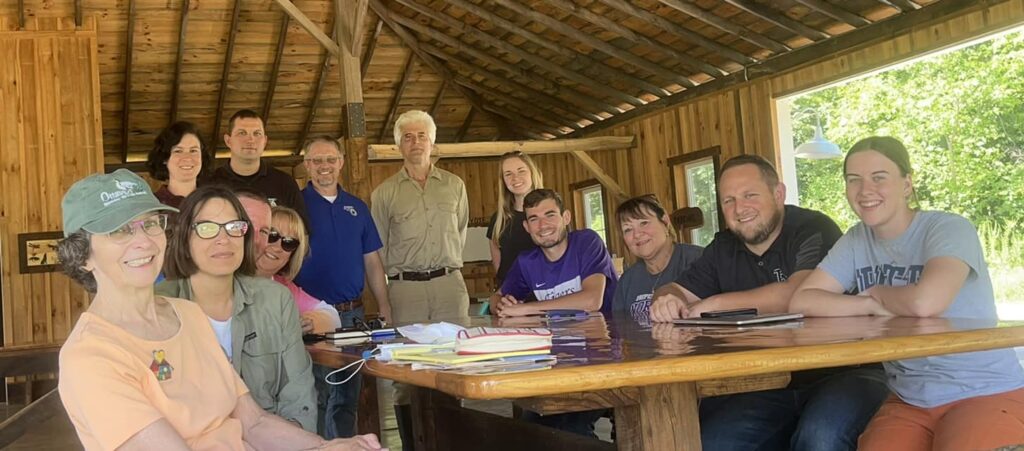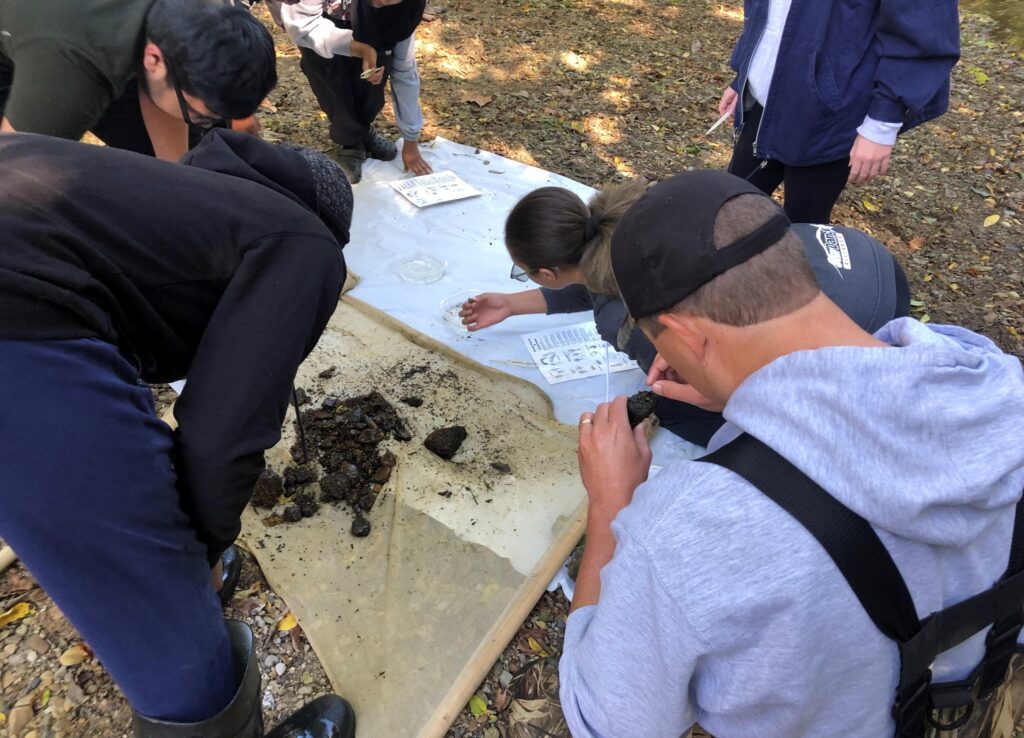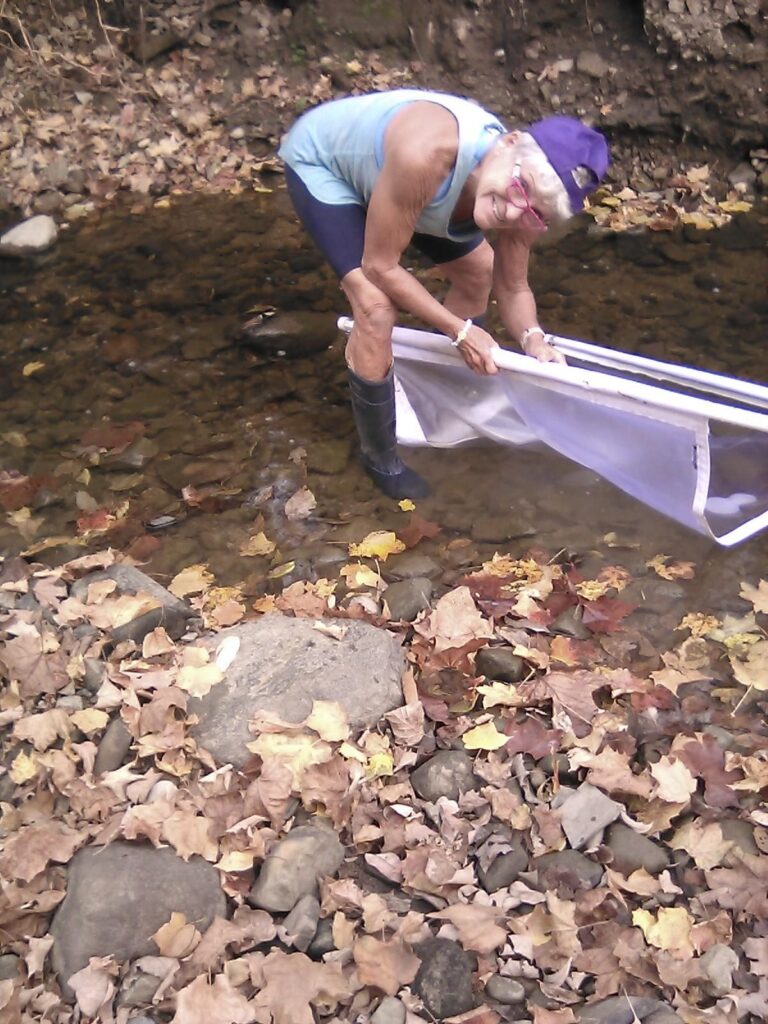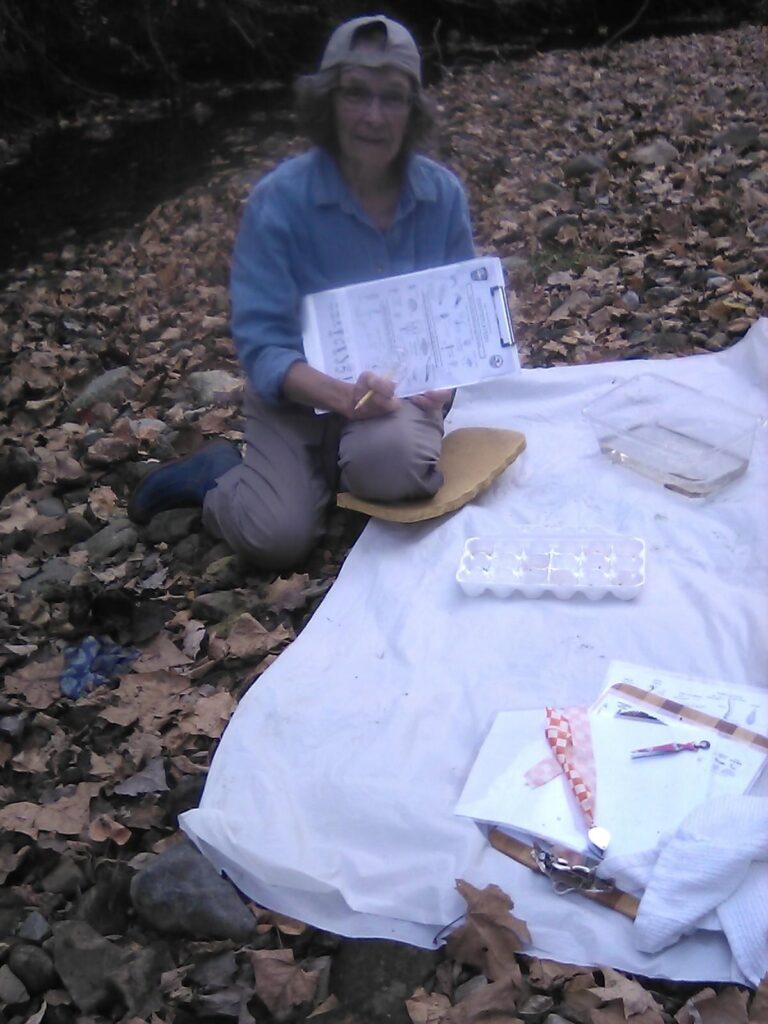Sycamore Creek
In 2022, local agencies, conservation organizations, educators and residents gathered to further a “Sycamore Creek Partnership” to improve public engagement and education on stream health of Sycamore Creek in Violet Township and the City of Pickerington. The informal group of teachers and curriculum coordinators at Pickerington Local School District, Coyote Run, Bill and Joyce Hague Foundation, Fairfield County Park District, OSU Extension Fairfield County, concerned citizens and our own Fairfield Soil and Water Conservation District (FSWCD) staff decided to move quickly and not wait to engage the community. Please like and share the “Sycamore Creek Report-Walnut Creek Watershed” on Facebook!
The first actionable item was the installation of a USGS LoCAS river gauge on Sycamore Creek to understand how the stream is responding to heavy rain events, dry weather times. This is collaboration of the EPA MS4 permitted communities of Pickerington, Violet Township, Liberty Township, ODOT with assistance from FSWCD and local citizens who contributed to its funding.
In the fall of 2022, the FSWCD helped coordinate over 60 Pickerington Central and North AP environmental science students and teachers for instream observations of Sycamore Creek. Thanks to Coyote Run for welcoming these students to the world of conservation right in their backyard. Thanks also to the educator team of Adam Salberg and Adam Philpott who lead the group to increase awareness of our human impact on our streams.
A little further upstream two residents also wanted to gain knowledge of the section of the stream on their land. “There’s nothing more fun and exciting than to learn about the tiny critters in our local stream” according to Cathy Jerbic, who collaborated to inventory a stretch of Sycamore Creek on her property in northern Violet Township. Cookie O’Neal got in as well and feels that “…as citizens, we can contribute to this community effort to protect a precious natural resource–water.”
In the spring of 2023, Pickerington North student Collin Searfoss helped gather information to help increase awareness of Sycamore Creek and provided some thoughts on the global need for conservation and how the Sycamore Creek Watershed is a tangible local example the student and community as a whole. Collins’s thoughts are below.
The Sycamore Creek Watershed spans through parts of the City of Pickerington, Fairfield and Licking Counties. This land is important to all that live in it, animals and humans alike.
What is Conservation
Land conservation is the protection and management of land resources. This includes the physical land resources, water resources, animal and plant species.
Animal Species in Sycamore Creek
Sycamore Creek Watershed is home to hundreds of species of animals on land, in the air and in the water. While Sycamore Creek is pretty small, it is still home to several common species such as crawdads, various species of frogs, and small fish. These areas also attract many species of birds most commonly around areas with water, including wood and mallard ducks. While there are not many records of specific species found in and around Sycamore Creek, there is a dedicated group of watches at Pickerington Ponds. Pickerington Ponds is outside Sycamore Creek watershed, but the species found there are representative of the species in this area.
Importance of Conservation
Conserving land is important because it maintains the environment for the future, which is beneficial to both humans and wildlife. One of the most important of these is our natural resources. Water is the key to all life on earth, and without a stable source all living things on earth would die. Conservation efforts to improve these natural water resources is just one of the many elements responsible for keeping our environment stable. There are already signs which point toward environmental collapse which is why conservation is more important now than ever before. One of these signs is the loss of species diversity, species are going extinct faster now than they ever have before. Each species in a specific ecosystem serves a purpose that keeps the ecosystem functioning. With the loss of one or more parts of this system, the ecosystem itself could collapse. Another major sign of ecosystem collapse is the global climate. 2022 was tied for the 5th warmest year on record since 1880, and the last decade has been the warmest officially documented. The earth been relatively stable for many years, so why now is it warming so much? Could the answer be that it is humans? If we are part of the cause, then we can also work to fix it.
Life Without Conservation
Without active conservation efforts the global ecosystem will begin to decay. Eventually the global ecosystem will collapse resulting in less food, more frequent and worse natural disasters. Resources will begin to run out and without these resources human populations can’t be sustained. Life on earth will slowly die off, including humans.
Threats to Conservation
The main threats to conservation are pollution in all its forms from development to agriculture, the change of ecological processes, spread of invasives and changes in our climate.
- Pollution is the introduction of destructive materials into the environment. These can be natural or produced by humans. Examples include litter, greenhouse gasses and pesticides.
- Development refers to the creation of structures such as houses, stores and schools.
- Agriculture is the cultivation of land for producing crops and livestock.
- Ecological processes is the interaction between the living and nonliving matter in an ecosystem. These include cycles such as the water and energy cycles.
- Invasive species is a species that has been introduced to a new ecosystem generally by humans. These species then commonly grow out of control and cause damage to the ecosystem.
- Climate change is a long-term effect on our planet mainly from excess carbon dioxide emissions, which has slowly raised the temperature of the earth and changed the weather patterns.
Bird watching at Pickerington Ponds
How to Aid in Conservation in Your Community
- Planting native species
- Not littering and picking up litter
- Reduce use of pesticides
- Recycle
- Reduce the water usage
- Keep a natural area in your yard
- Invest in clean energy
- Use less trash (less one use items)
- Get involved in larger scale efforts of conservation
Upcoming events in central Ohio
People/organizations currently working toward conservation
Resources
Land Conservation and Former Mine Lands: Preserving Natural Land Resources, Planning for the Future
General Information on Land Conservation
Conservation Plan of Ohio’s Forest
List of Invasive Species of Ohio




